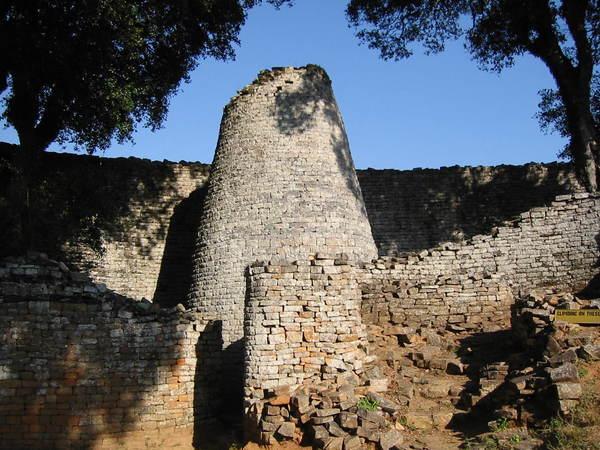Is it a scientific fact that Zimbabwe was bult by Africans? It sweeps aside the romantic notions, pleasing to the colonial mindset that the Great Ruins were the handy work of King Solomon or perhaps the Queen of Sheba despite Dr. Randall-MacIver’s thesis that the sophistication of the architecture was a “slovenly” effort typical of primitive peoples. As for why the Africans stopped making monumental walls, mybe they just lost the motivation. Aftr all, in the West we don’t buld fortified caastles anymore, and then why should they build fortified kraals. In addition, the curved walls without corners fir in to the research that shoe straight lines outside the African cultural pattern. And as for the gold that is apparently just lying in wait on the grounds somewhere, according to R.N Hall’s Ancient Ruins of Rhodesia is also B.S.

—When the ruins of Great Zimbabwe were excavated by treasure-hunters in the late nineteenth century eight carvings of soapstone birds were unearthed. One bird was sent to Cecil Rhodes at his Groot Schuur home in Cape Town and, somewhat controversially, still remains there. This is the only bird not currently in Zimbabwe.
Four complete birds and a partial bird were sent to Rhodes separately and kept in South Africa but these were returned to Zimbabwe in 1981 after independence.—click image for source…
xxxxAfricans didn’t value gold particularly, but they were glad to trade it to the Arabs and Portuguese in exchange for beads and pottery, which were found in abundance in the excavations. Even then, the mining was primitive and not much gold could have been taken out in any given year, but they likely kept scratching and hacking away for a thousand years, so it adds up, but by today,s mining standards can hardly be considered as a considerable deposit. What is striking about the ruins are the gently curving surfaces, the absence of sharp angles, and the delicate grace of the walls despite their massiveness; as well as the narrow chevron pattern that is the only adornment. Some have claimed there is an occult design, but the chance position of the boulders to serve as walls for the citadel are a more plausible reason.
ADDENDUM:
(see link at end)…Gertrude Caton-Thompson, a skilled archaeologist whom the British Association for the Advancement of Science sent to GreatZimbabwe in 1929 to examine the site anew, filed letters about themost absurd crackpot theories under “insane.” Caton-Thompson’s careful study employed stratigraphy, one of the cornerstones of modern archaeology. Stratigraphy is the study of layers of soil. Deeper layers are older than the layers above them. By meticulously measuring the depth of everything found at a site, archaeologists can develop a chronology, or sequence of events across time, for the site.Caton-Thompson concluded in Zimbabwe Culture, her report on her investigation, that Great Zimbabwe was the relic of “a nativecivilization” of “originality and amazing industry.” Although she suggested that Arab or Near Eastern traders who visited the coastal cities of East Africa might have influenced the site’s African builders, her main finding was clear: Great Zimbabwe was African, and it was much more recent than the ancient cultures of biblical legend. Still, the old colonial myths about Great Zimbabwe’s non-African origins have lingered for years.Read More:http://www.scribd.com/doc/74688564/Great-Zimbabwe






 COMMENTS
COMMENTS